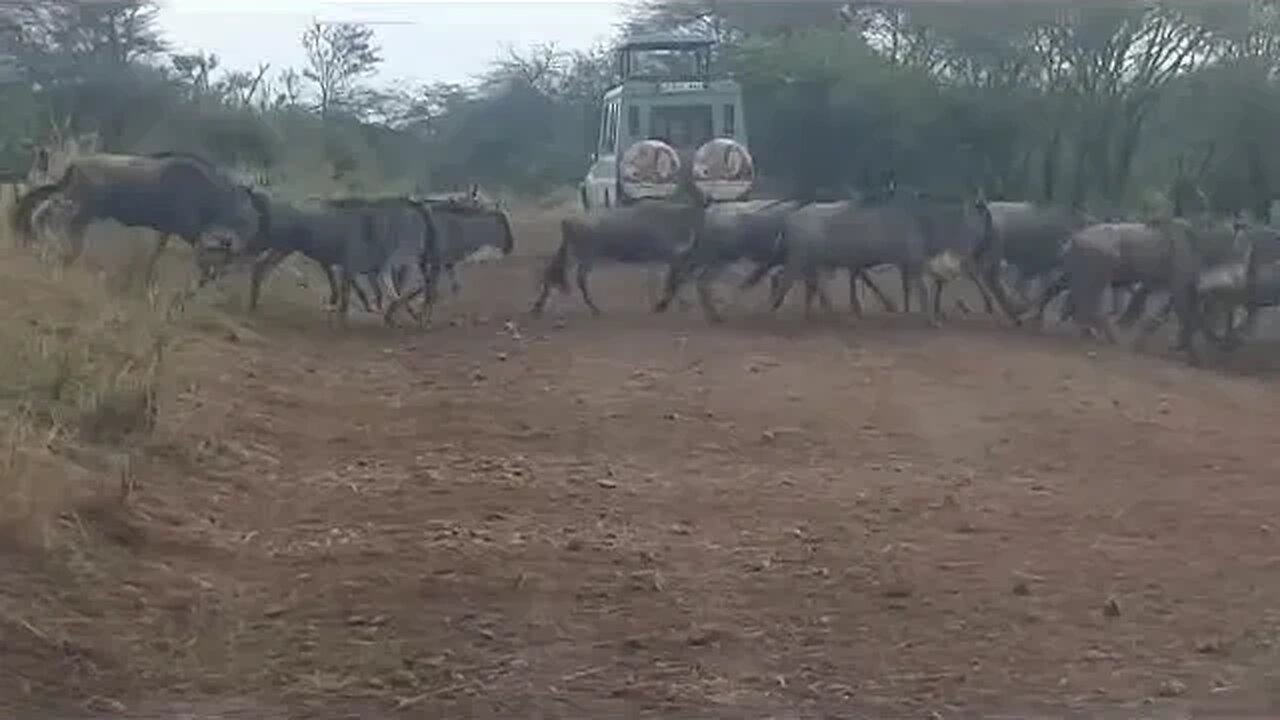Premium Only Content

Serengeti #wildbeest migration
A better representation of the circle of life probably cannot be found anywhere else in the world. The journey starts in Southern Serengeti when wildebeest calves are being born. Predators like lions and hyenas are constantly hunting for babies, and thousands and thousands of calves are born within a couple weeks of each other – a feast for the eyes of true wildlife enthusiasts.
When the drought comes in May, the herd moves north, towards the Masai Mara in Kenya, chomping down the high green grass, quickly followed by the gazelles and zebras. The migration is not without risk: crossing rivers means facing about 3,000 crocodiles, patiently waiting for a kill. Not to mention the famous Serengeti lion population: by far the largest in Africa. Despite the abundance of hoofed meat in this area, life is not easy for these big cats in this unforgiving landscape. But seeing a group of lions collaborating to hunt down a wildebeest is an unforgettable sight.
Then, with the beginning of the short rains in late October, the migration makes its way back into the Serengeti. By December, the herds trek past Seronera – a small settlement in central Serengeti where the official Serengeti Visitors’ Centre is located – to return to their calving grounds again, and the circle is complete.
-
 LIVE
LIVE
TimcastIRL
2 hours agoLiberals BLAME TRUMP For NYC Tourist Helicopter Crash After Tragic Accident | Timcast IRL
13,347 watching -
 1:16:36
1:16:36
Glenn Greenwald
4 hours agoGlenn Takes Your Questions: On Banning Candidates in the Democratic World, Expanding Executive Power, and Trump's Tariffs | SYSTEM UPDATE #437
80.8K37 -
 40:09
40:09
Friday Beers
3 hours ago $0.30 earnedWii Golf Gets Heated: Friday Beers vs Full Squad Gaming
8.87K -
 LIVE
LIVE
Man in America
9 hours agoThe DISTURBING Truth About Tariffs That NO ONE Is Talking About
1,026 watching -
 32:30
32:30
Stephen Gardner
2 hours ago🚨BREAKING: Trump under INVESTIGATION for Stock Market Manipulation!
3.5K46 -
 44:54
44:54
Ami's House
2 days agoThe Dave Smith Debate is Broken. Here's a Better Way In | Dave's Rogan Appearance
141 -
 58:35
58:35
BonginoReport
5 hours agoFormer Trans Athlete Accepts Biological Reality - Nightly Scroll w/Hayley Caronia (Ep.24) - 04/10/25
111K68 -
 LIVE
LIVE
Joker Effect
1 hour ago250$$ Giveaway! MOTHERLAND TAKEOVER!
147 watching -
![🔴 MAFIA III [first look]](https://1a-1791.com/video/fww1/21/s8/1/V/_/U/A/V_UAy.0kob-small--MAFIA-III-first-look.jpg) LIVE
LIVE
Fragniac
20 hours ago🔴 MAFIA III [first look]
62 watching -
 LIVE
LIVE
megimu32
3 hours agoON THE SUBJECT: Movies We Had Zero Business Watching.. But Totally Did!
213 watching